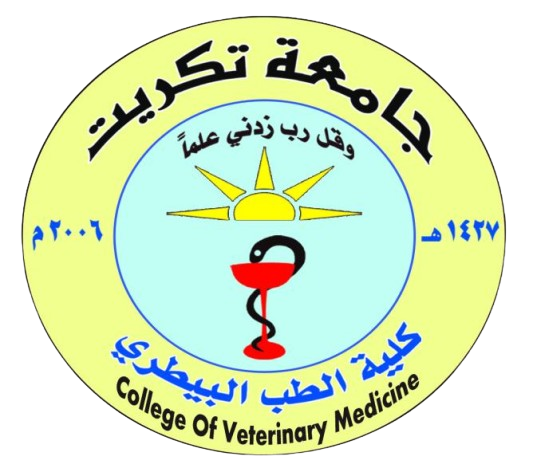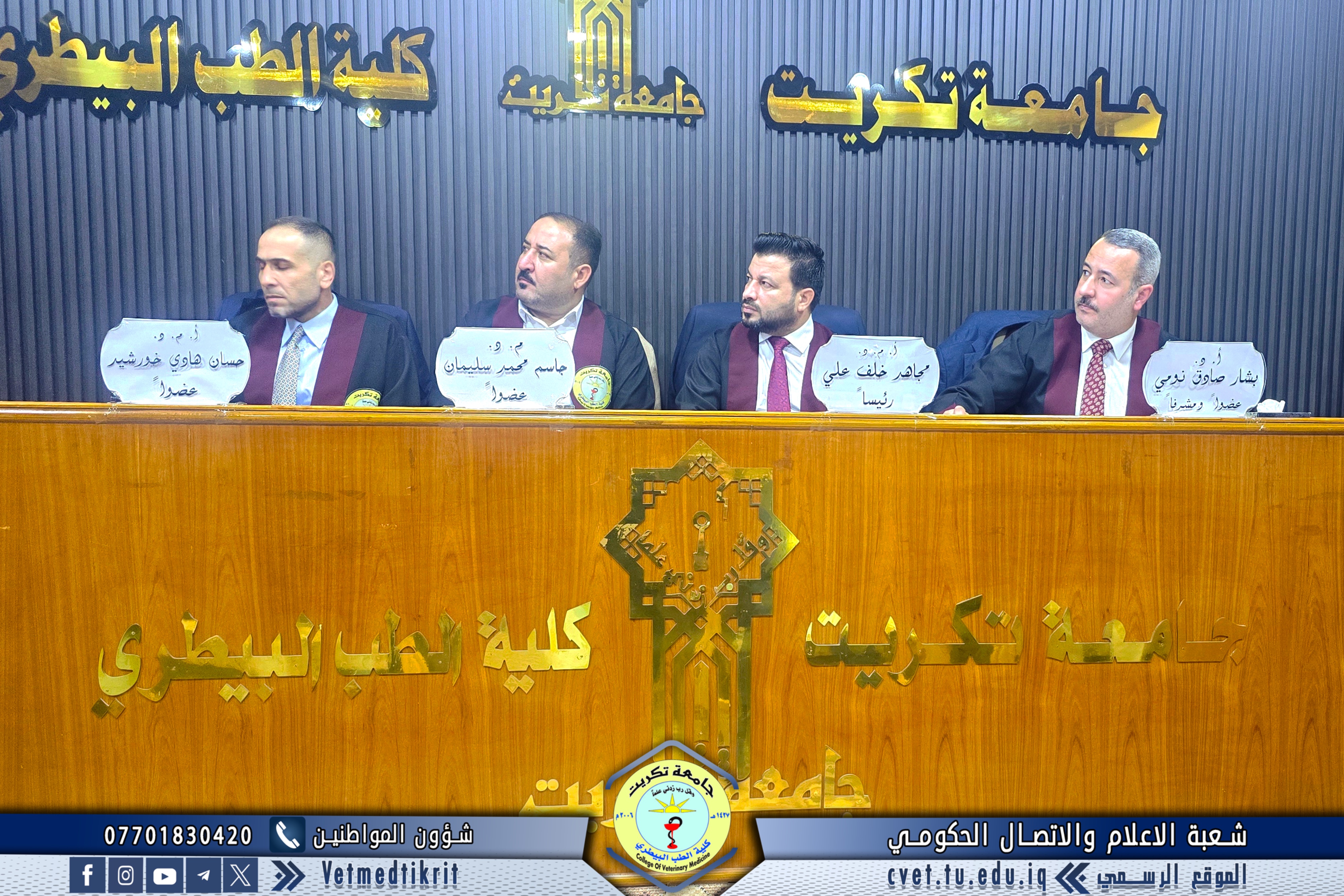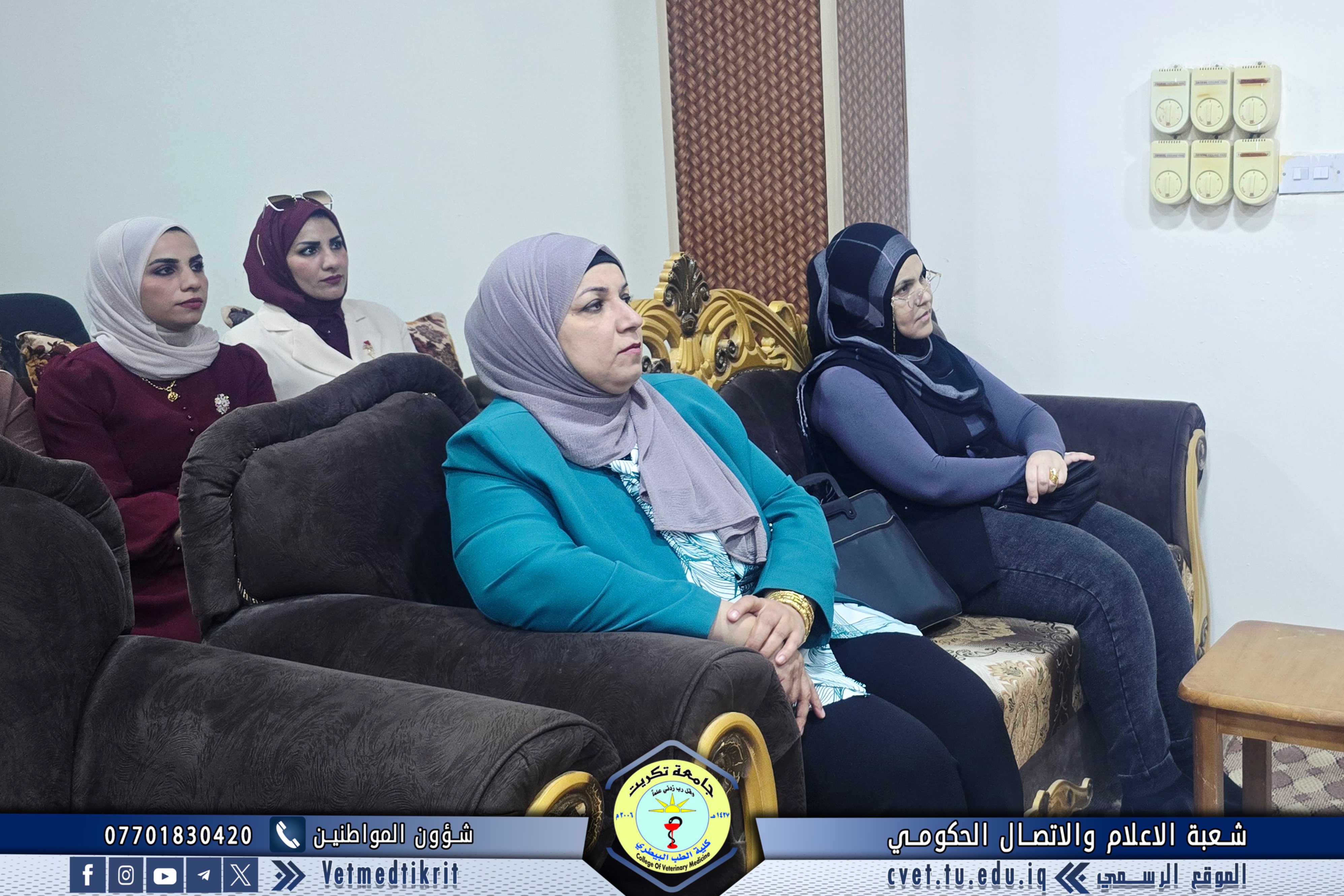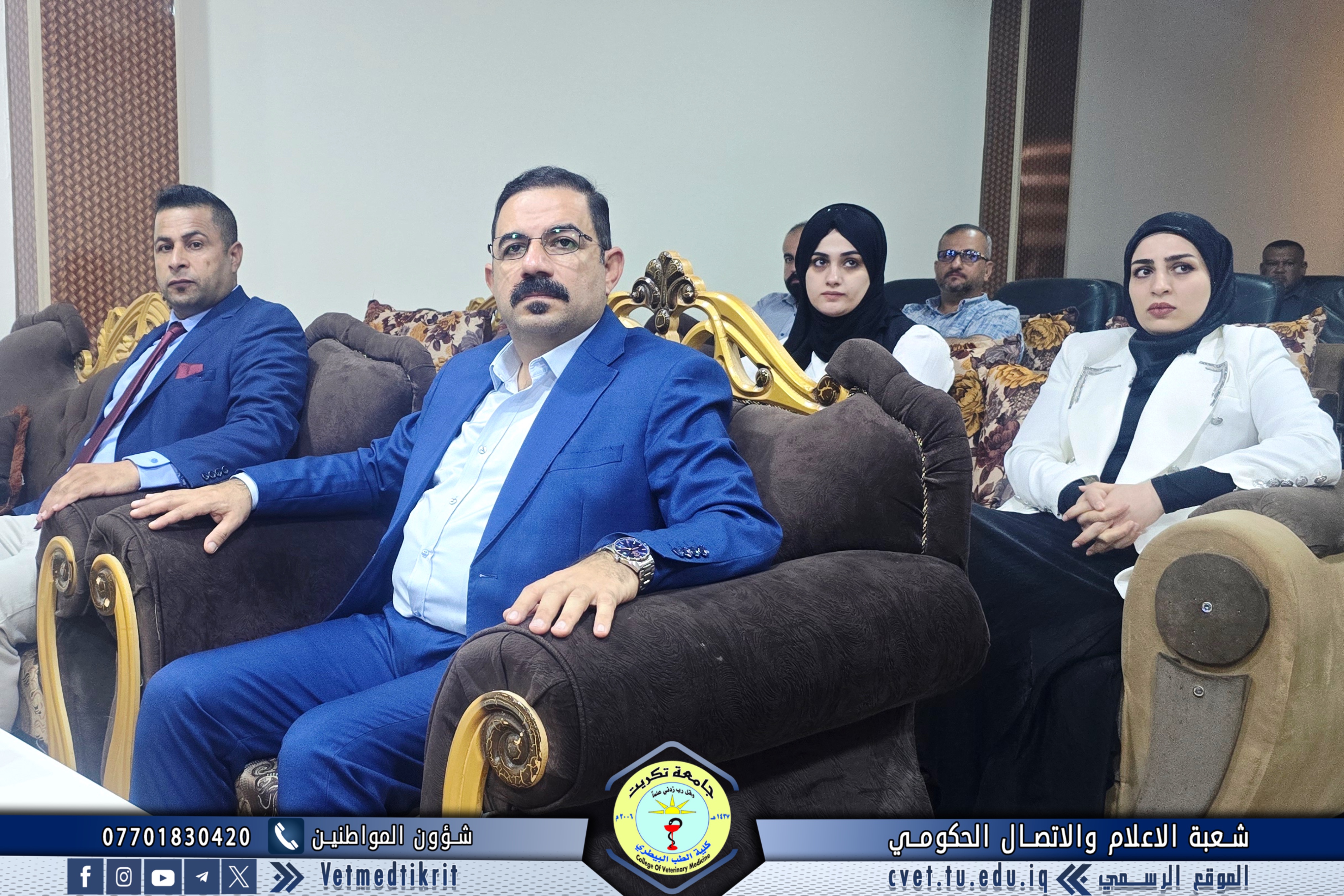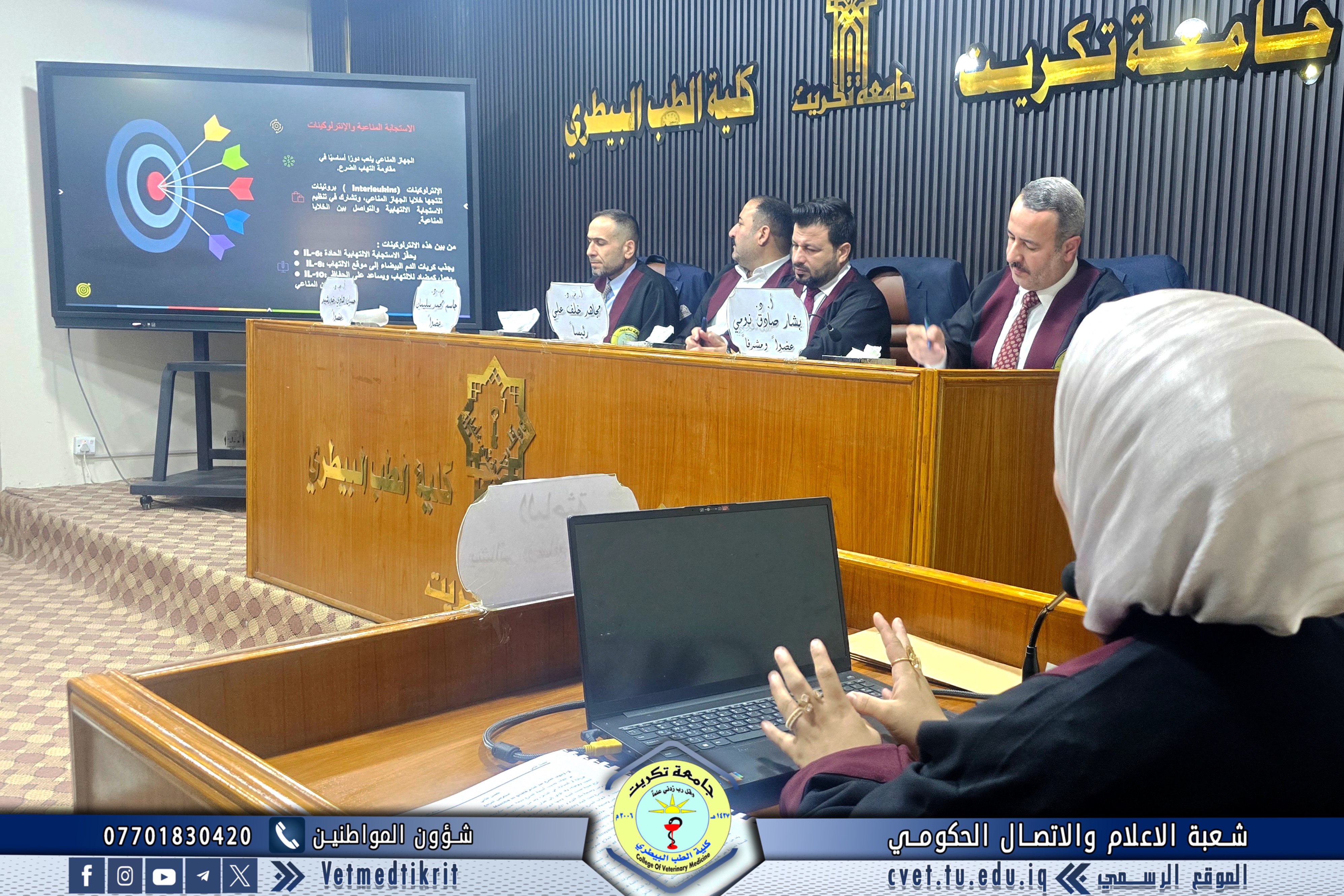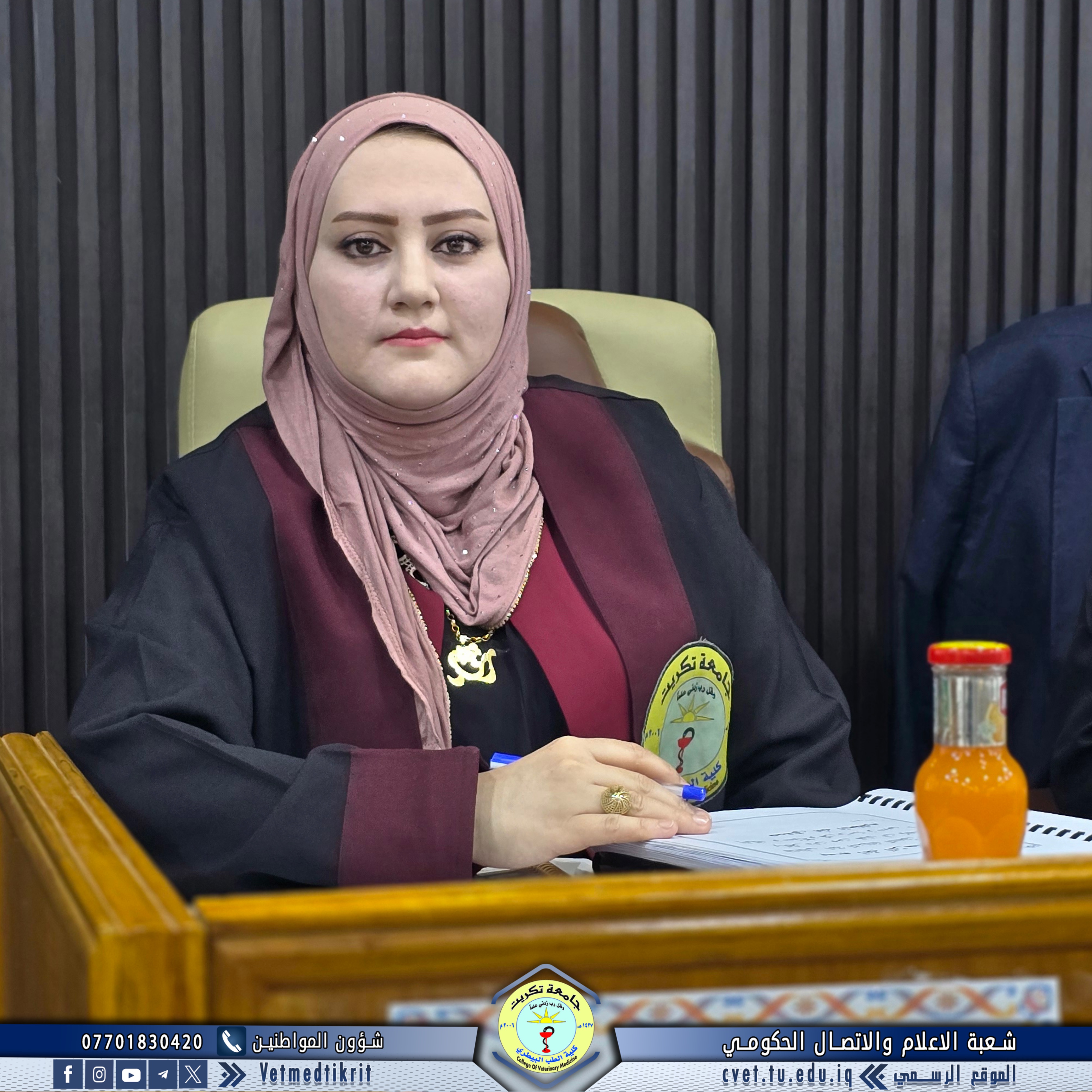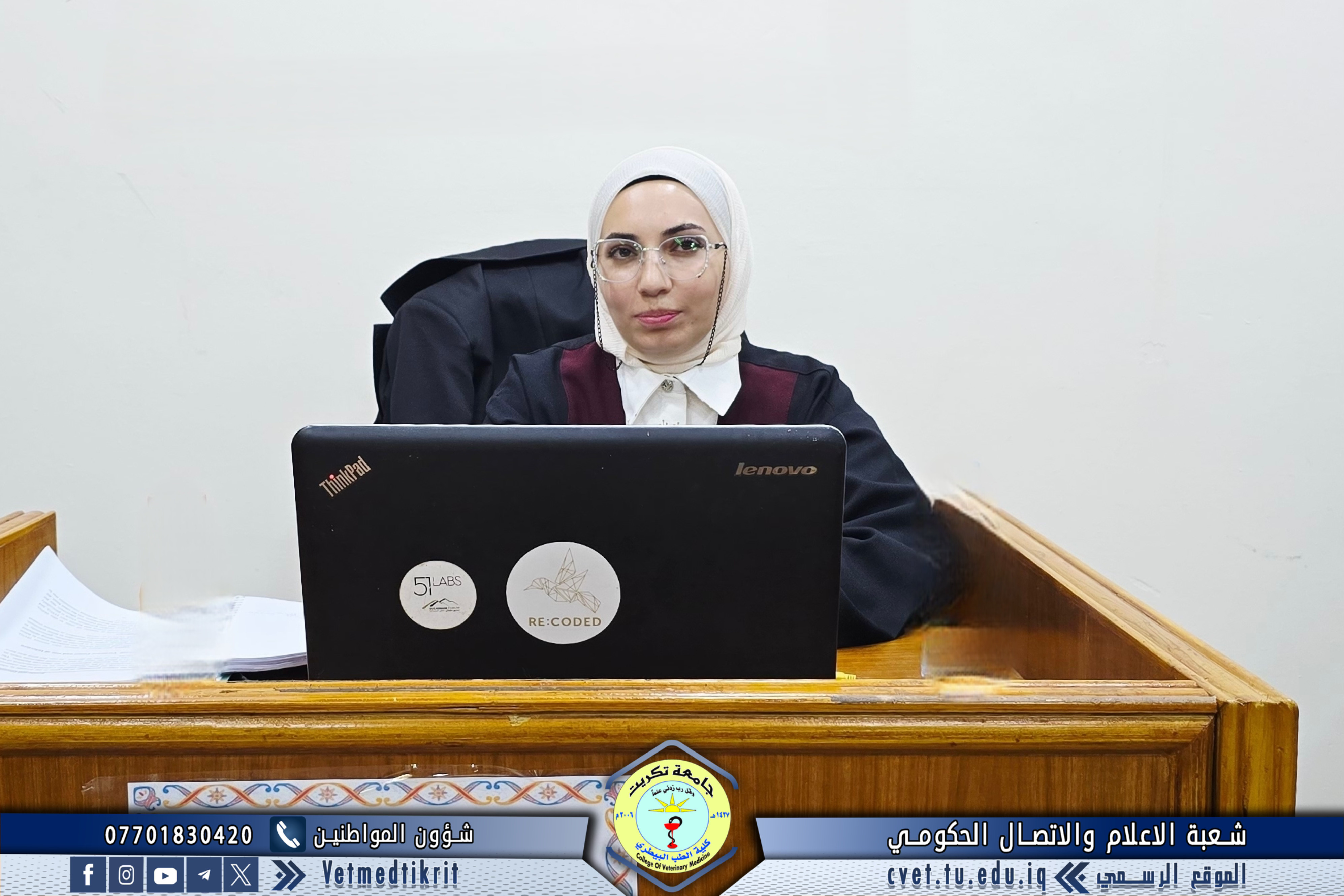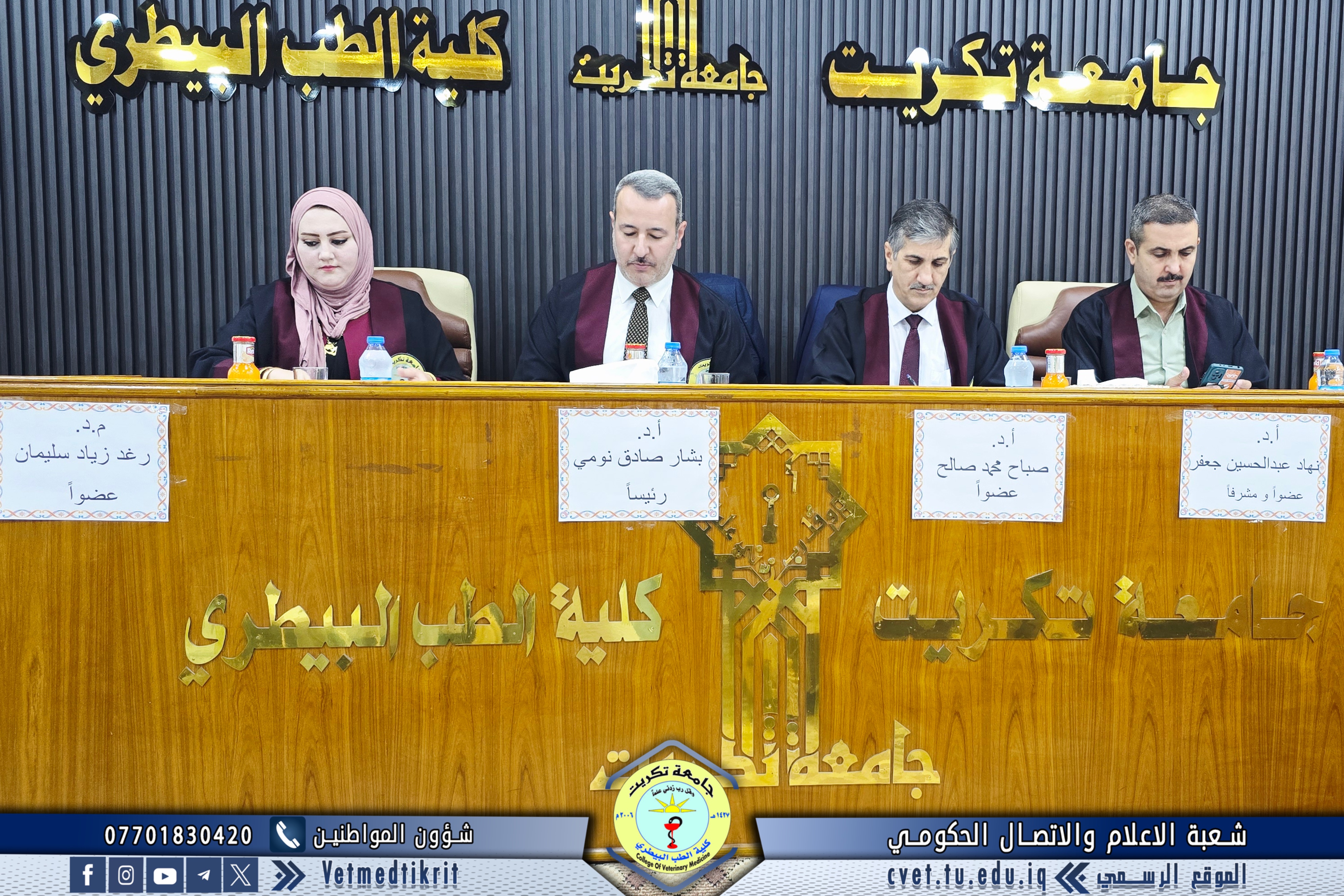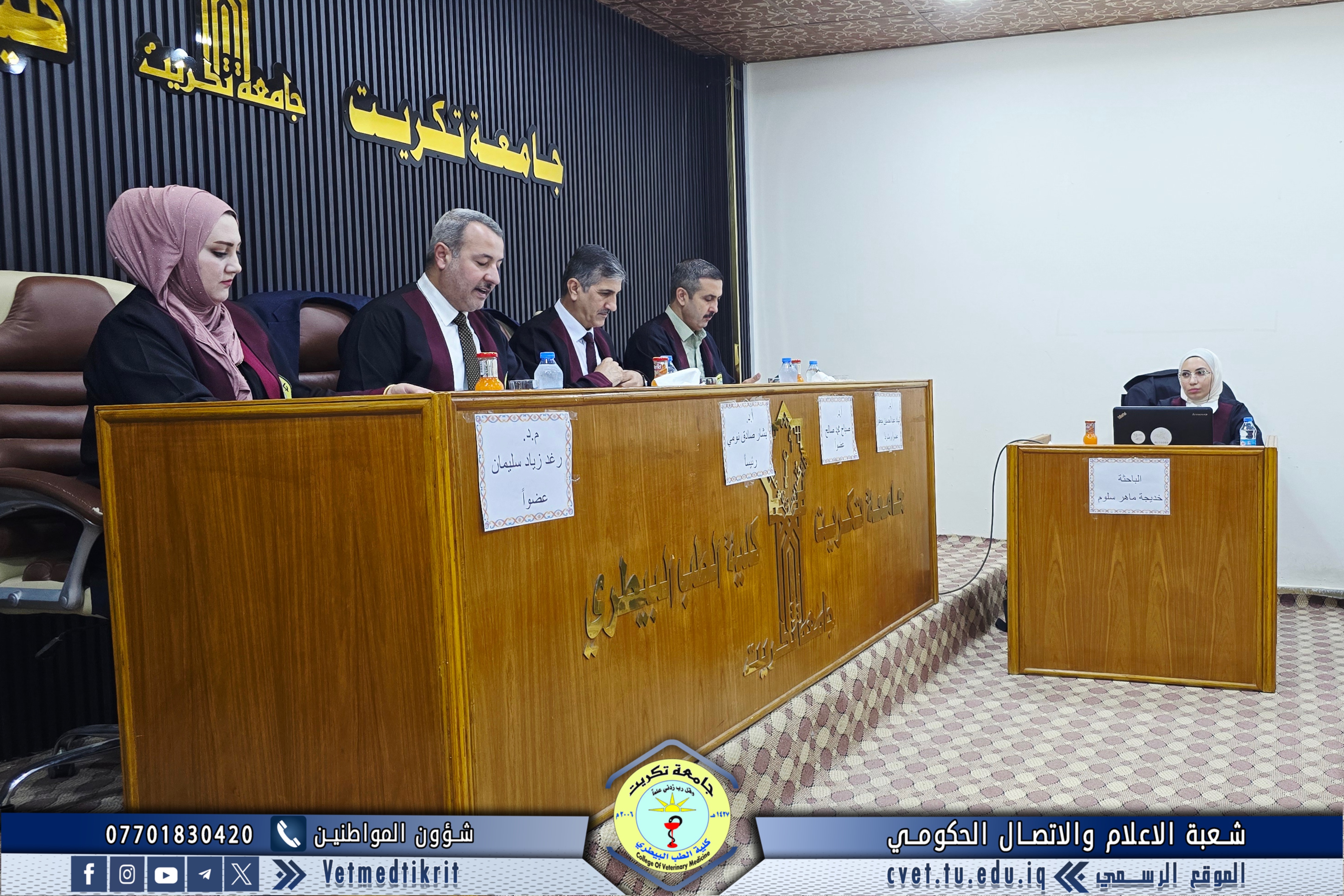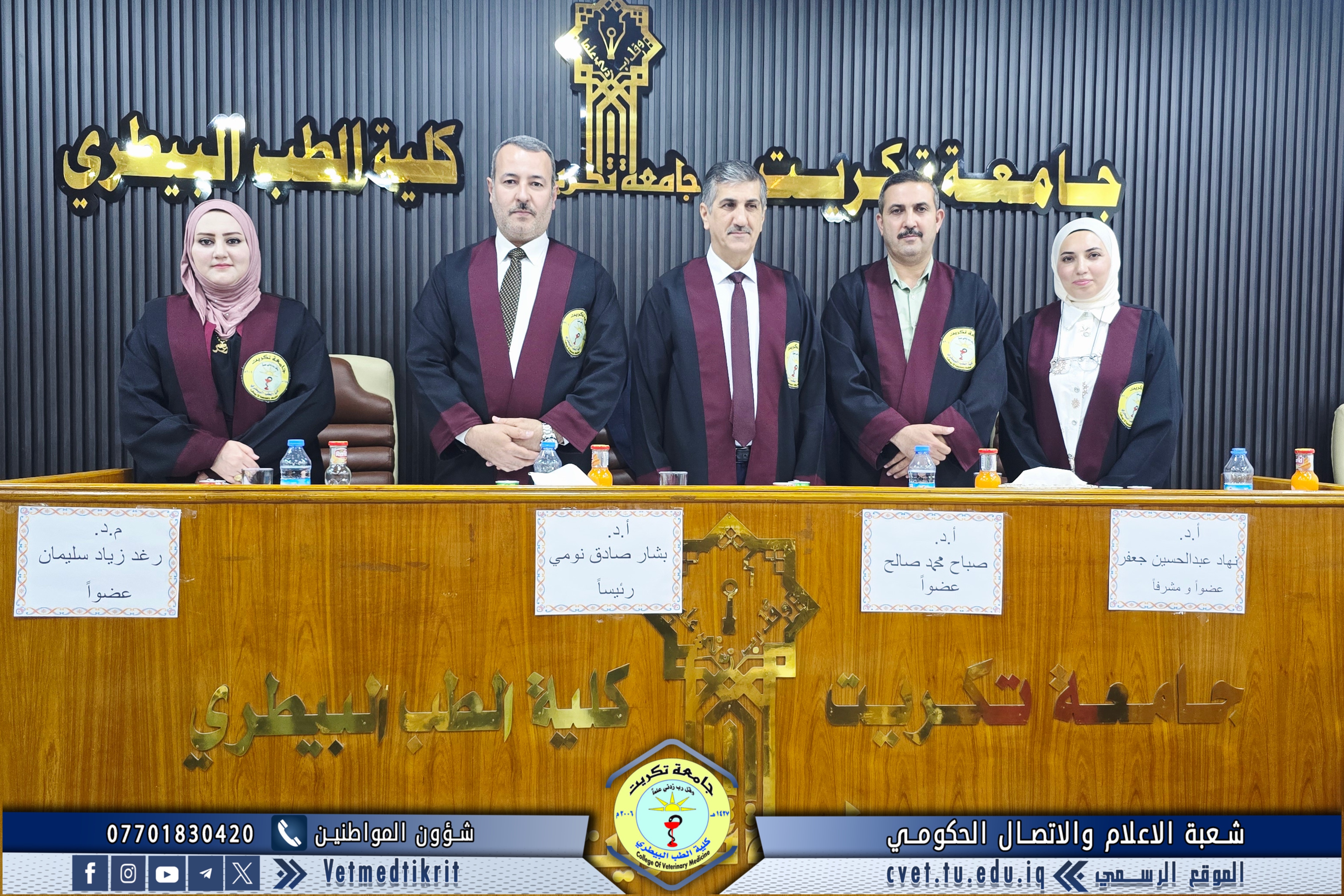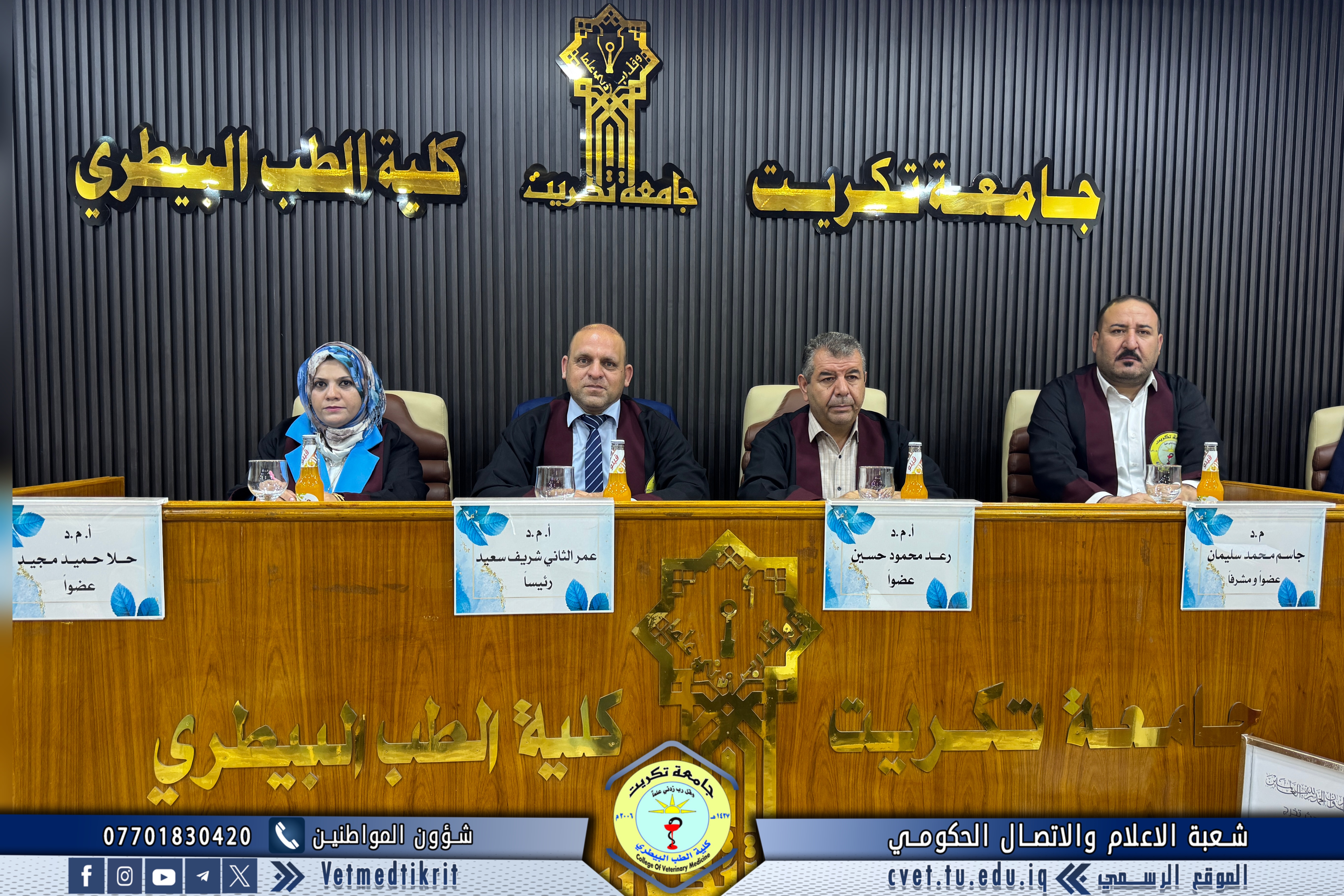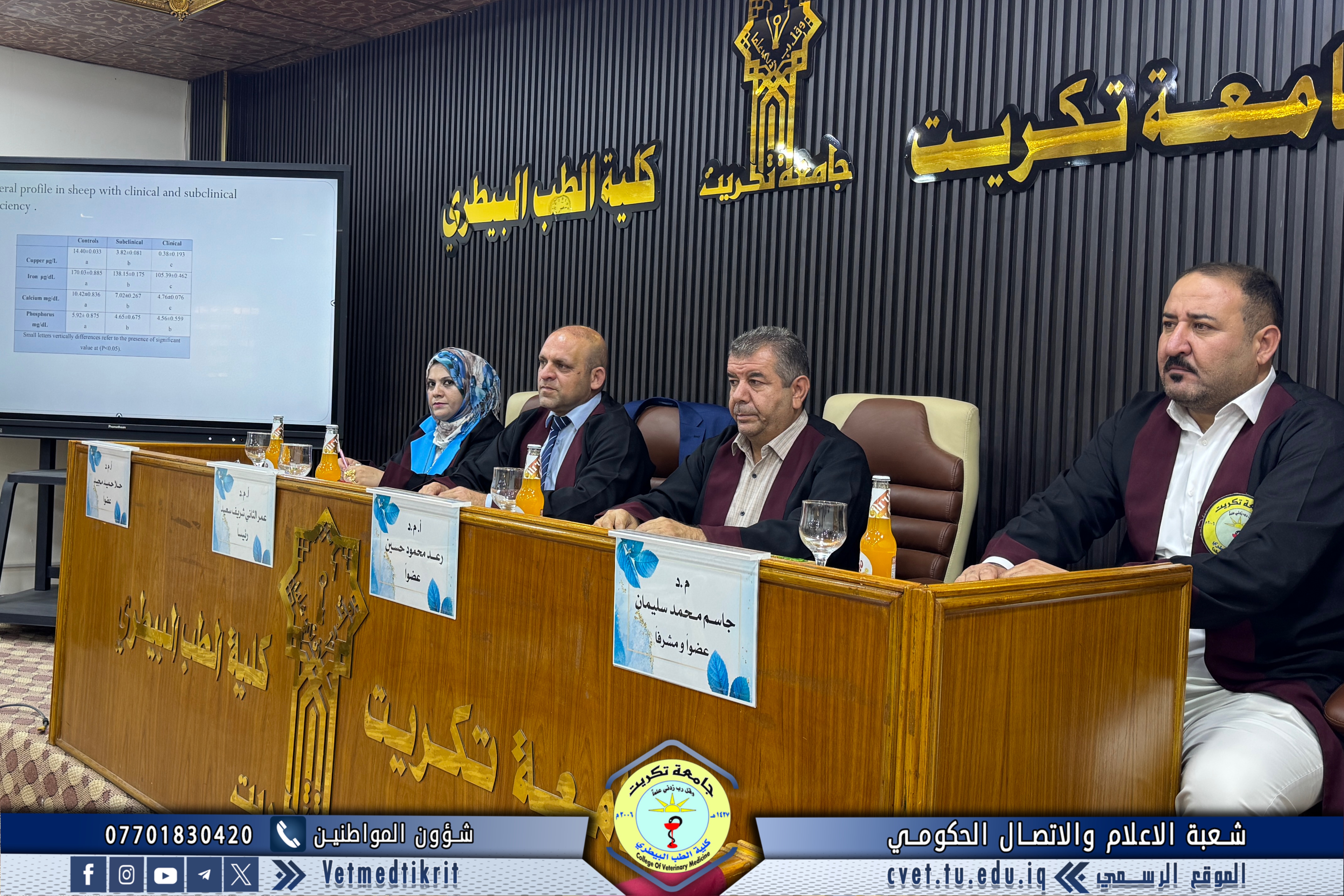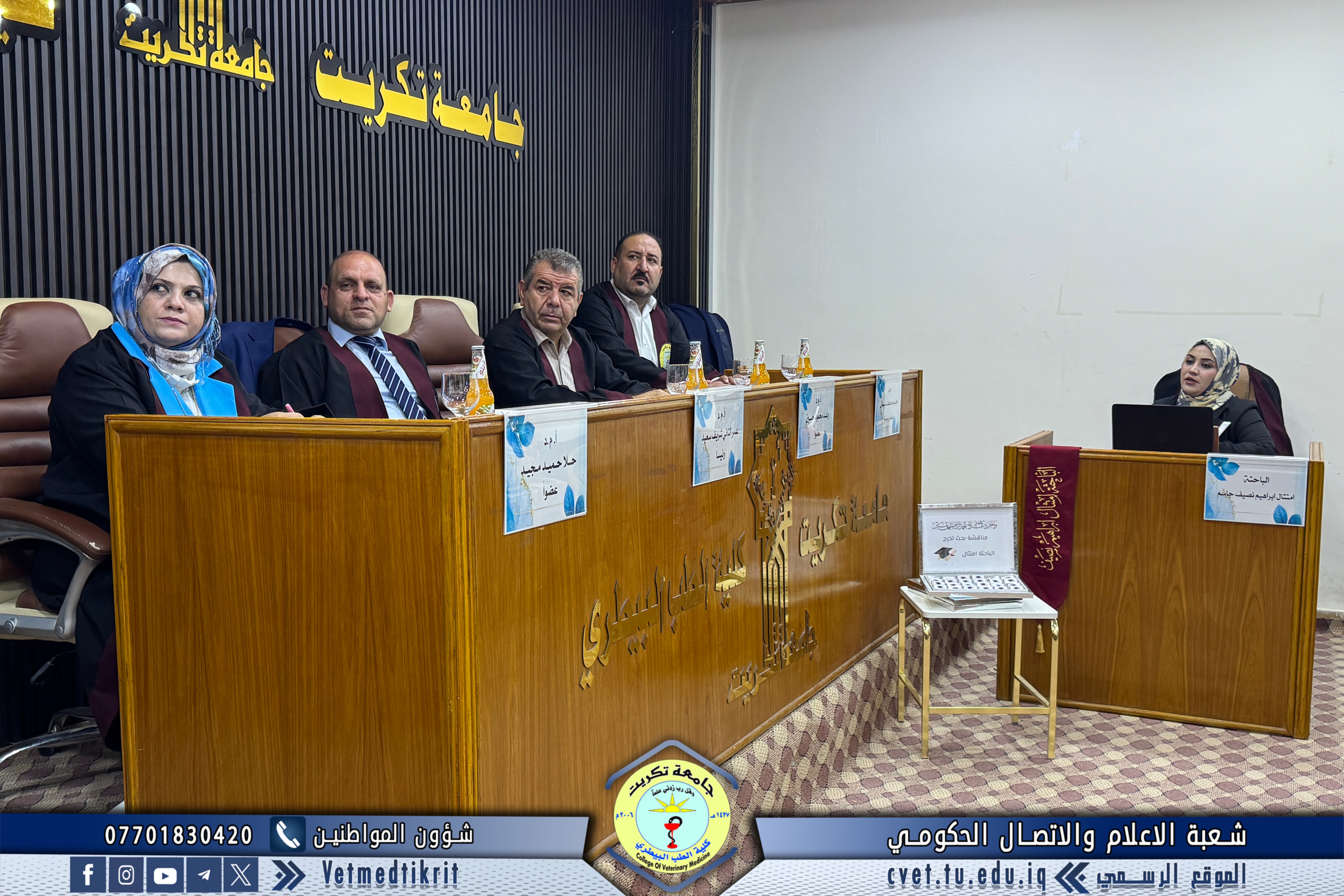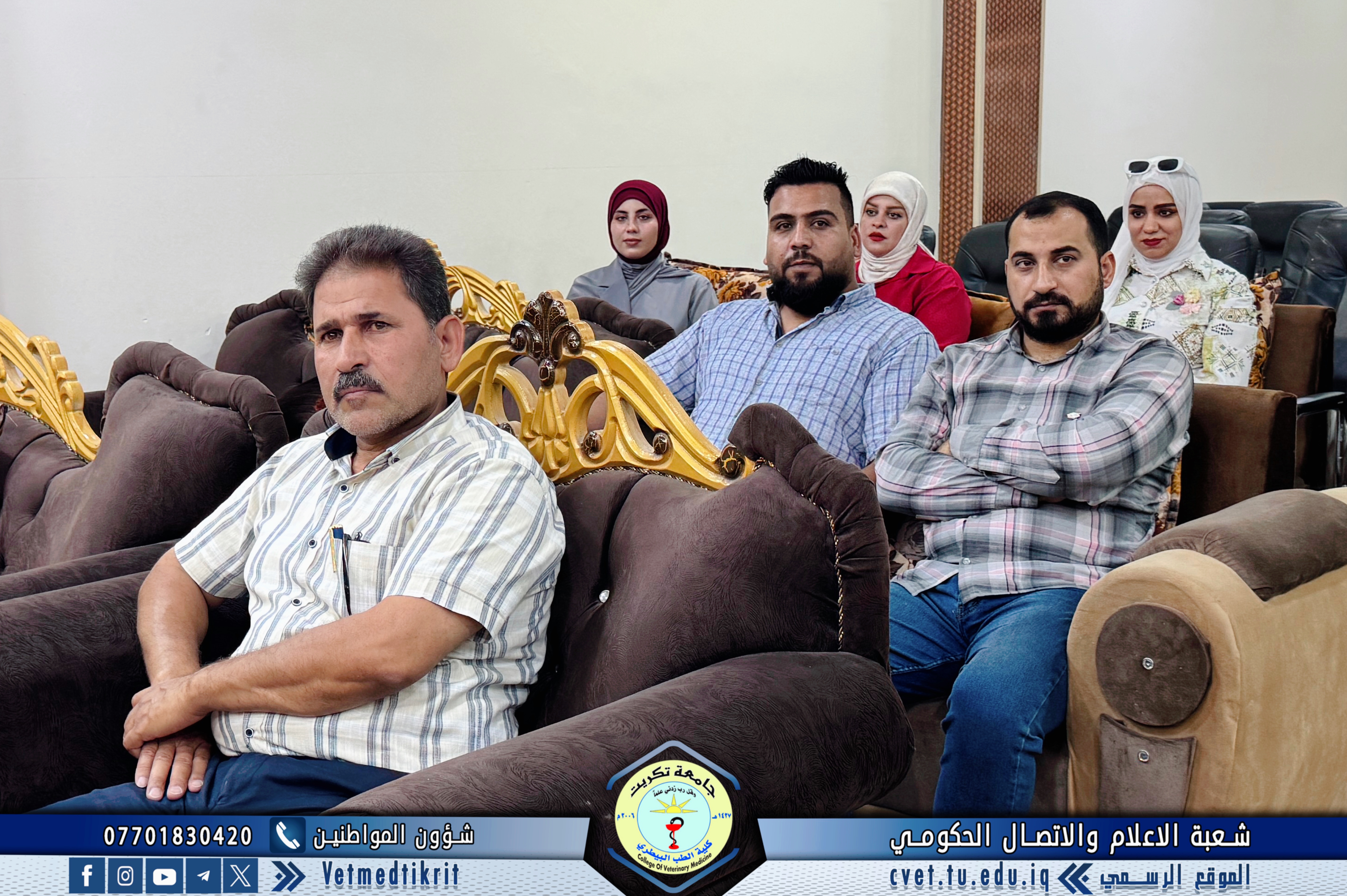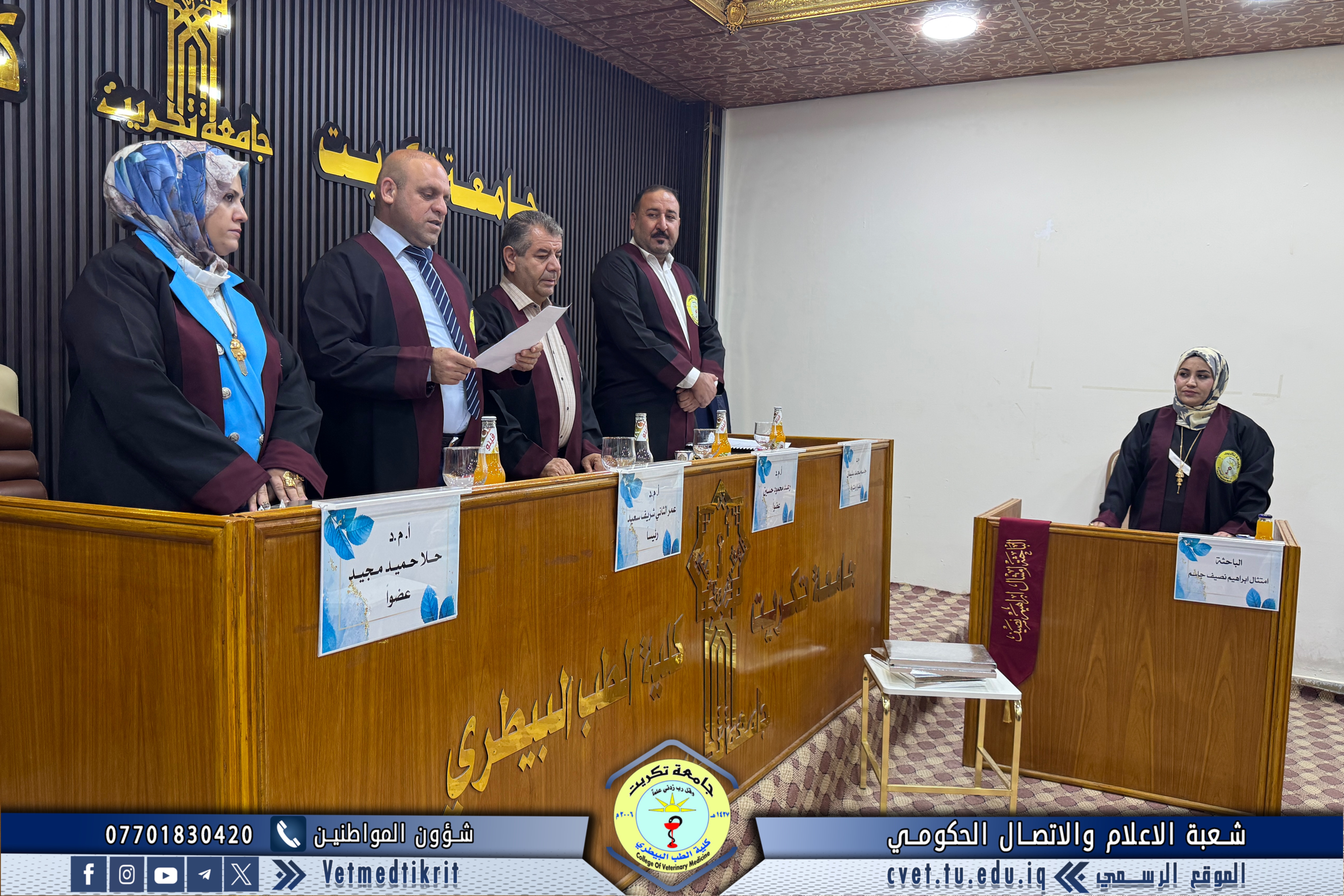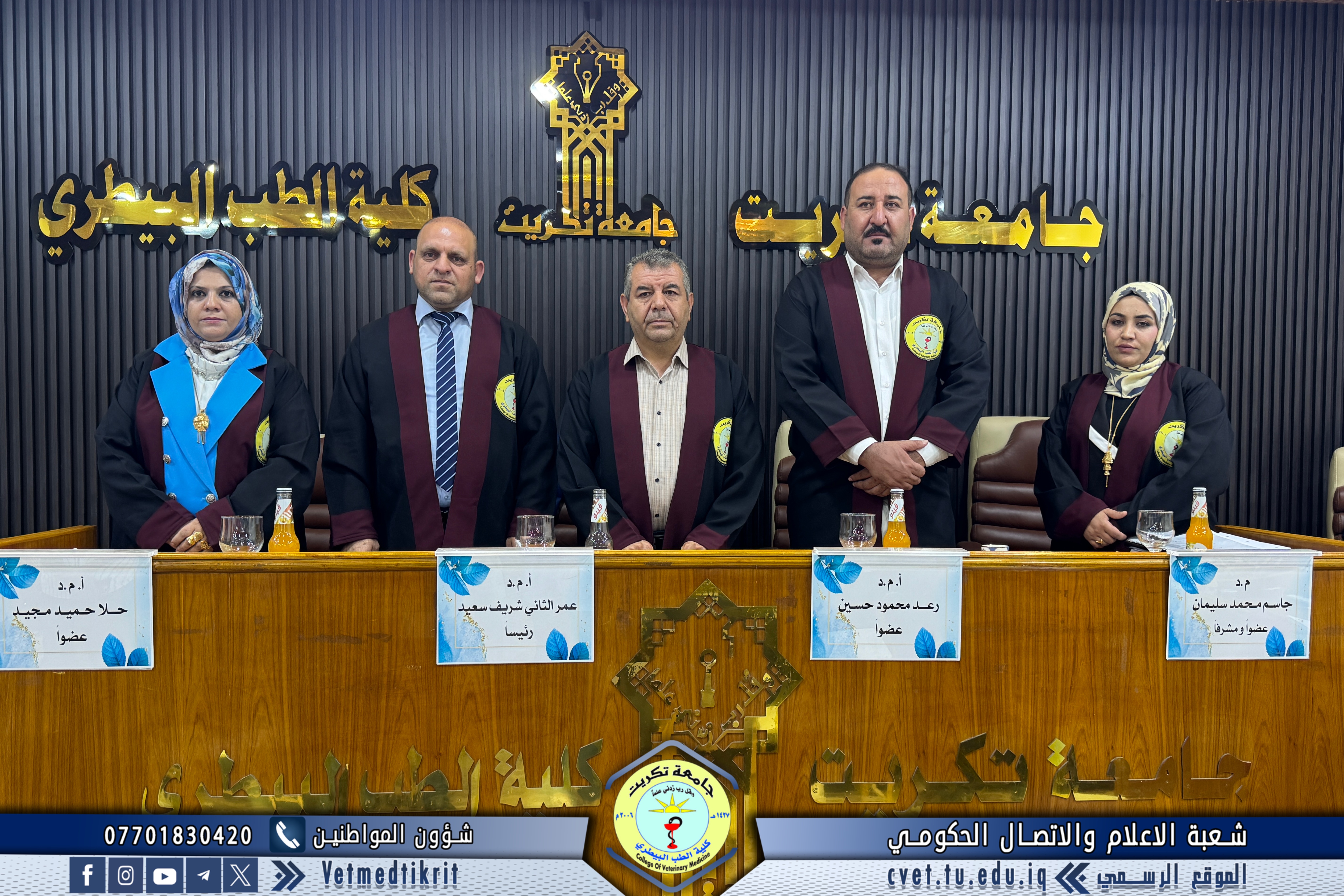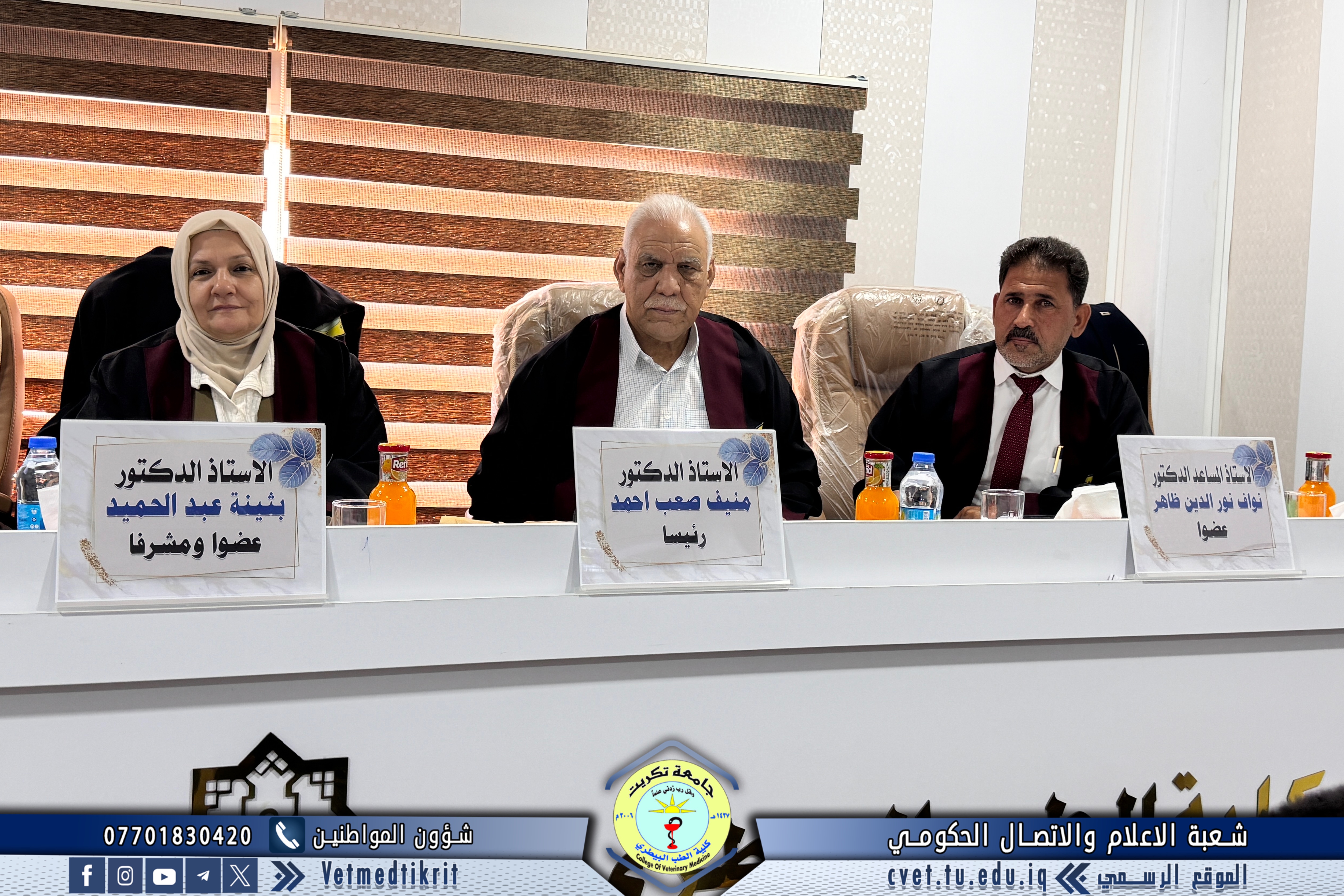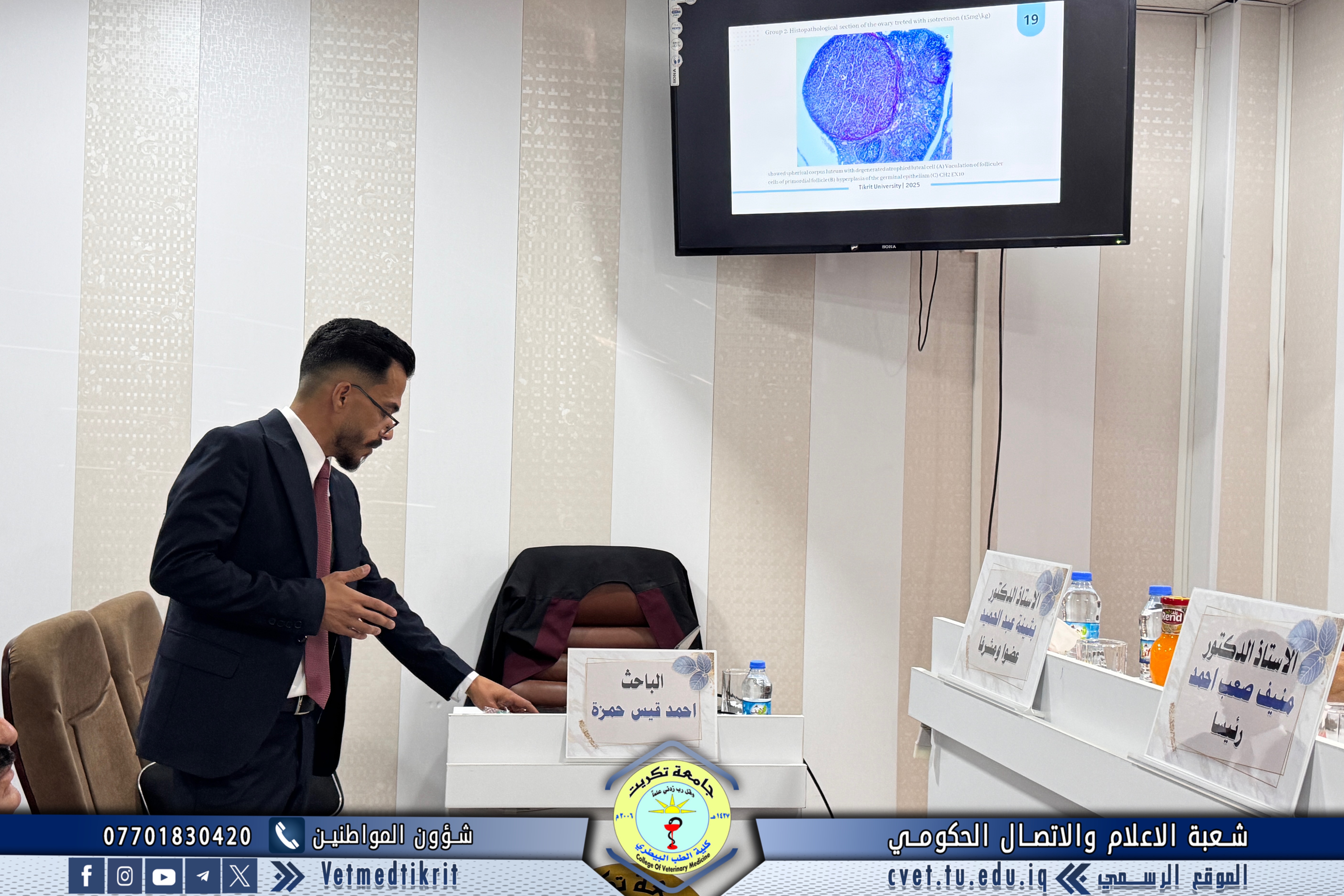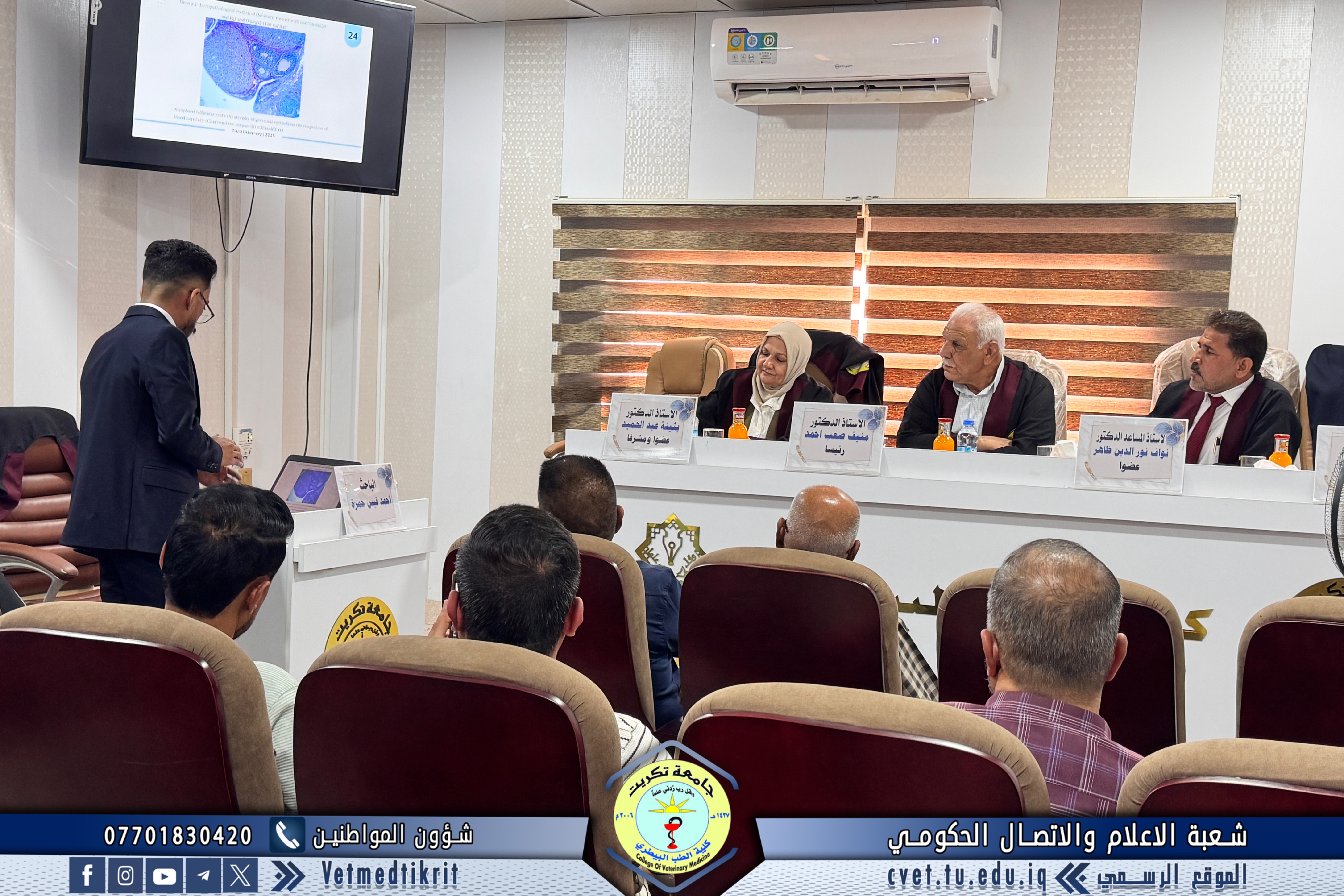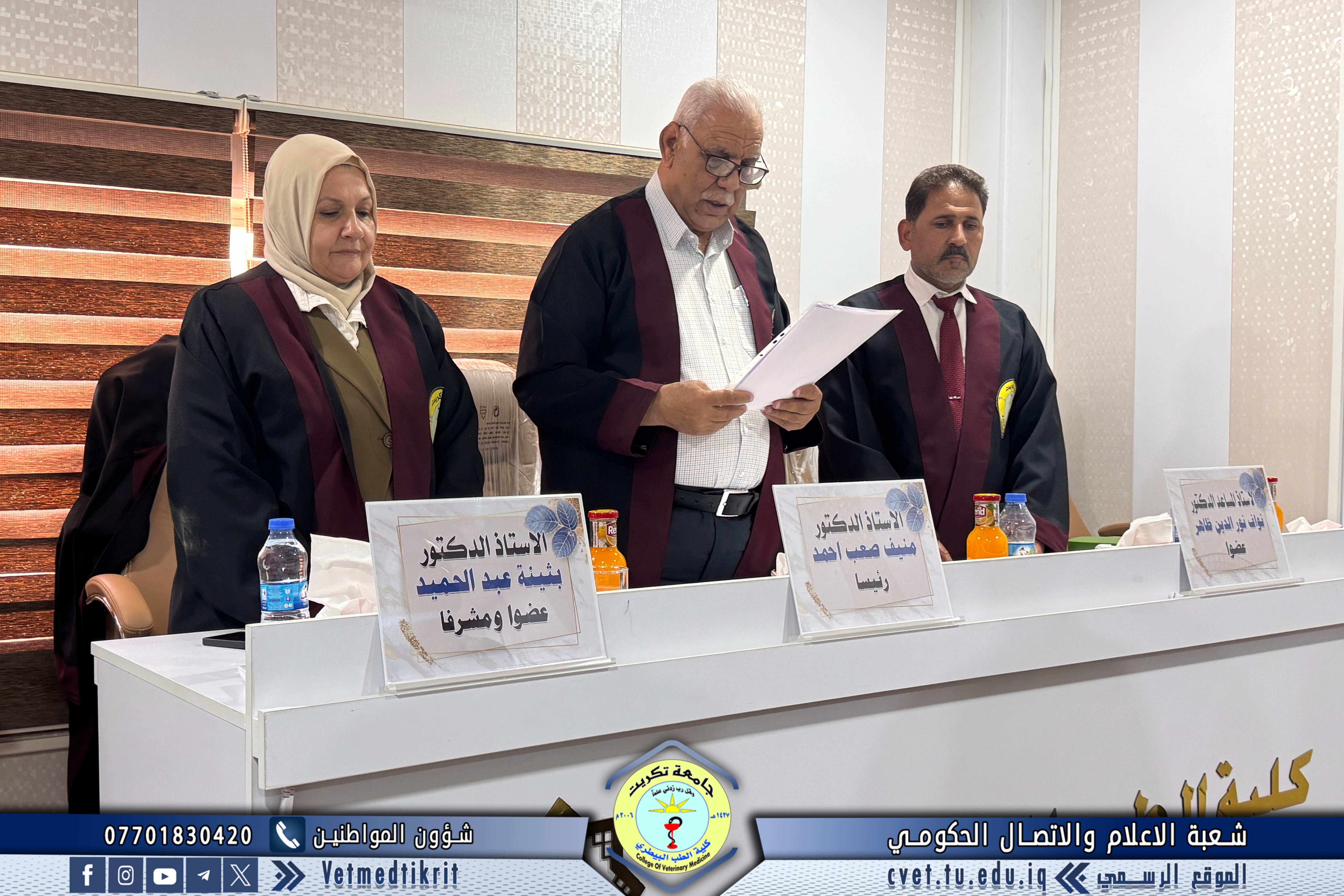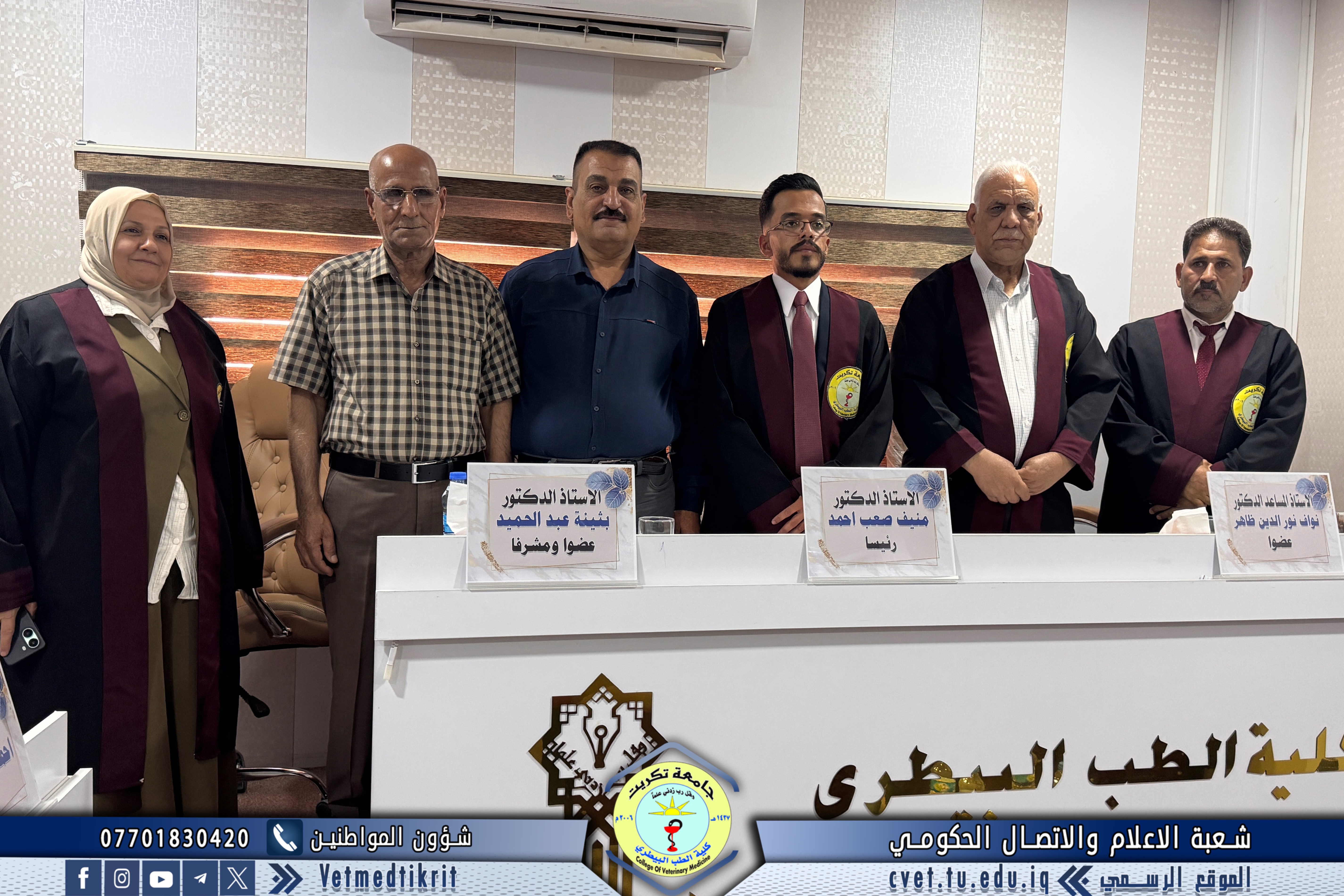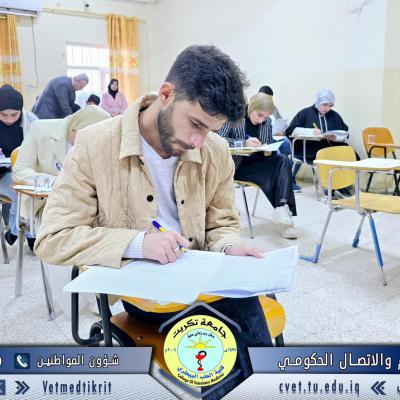By the grace of God, the Master's thesis entitled "Levels of Some Interleukins in the Milk and Blood of Goats Experimentally Infected with Mastitis Caused by Staphylococcus aureus" was discussed by the student (Bashaer Waddah Ibrahim Muhammad) in the field of (Microbiology). The discussion committee consisted of:
- Assistant Professor Dr. Mujahid Khalaf Ali / Specialization: Medical Microbiology / Tikrit University - College of Medicine / Chairman
- Assistant Professor Dr. Hassan Hadi Khorshid / Specialization: Animal Diseases / Tikrit University - College of Veterinary Medicine / Member
- Assistant Professor Dr. Jassim Mohammed Sulaiman / Specialization: Internal and Preventive Medicine / Tikrit University - College of Veterinary Medicine / Member
- Professor Dr. Bashar Sadiq Noumi / Specialization: Immunology and Bacterial Diagnosis / Tikrit University - College of Veterinary Medicine / Member and Supervisor
The abstract of the thesis was as follows:
Mastitis is a common and serious disease affecting goats, negatively impacting milk production and animal health, leading to decreased productivity, early slaughter, or death of infected animals. The most common causative agent of this disease in dairy goats is Staphylococcus aureus, which is one of the most prominent pathogens associated with clinical and subclinical mastitis in small ruminants.
The current study aimed to evaluate the immunological and histological changes associated with experimentally induced mastitis in local Iraqi goats. This was achieved by measuring the concentrations of certain cytokines (IL-6, IL-8, and IL-10) in serum and milk, calculating the number of somatic cells, and studying histological changes in udder tissue and lymph nodes during the infection stages.
The experiment was conducted in the animal field and laboratories of the College of Veterinary Medicine, Tikrit University, from January 15, 2025, to April 25, 2025. Twelve local goats, aged 1.5–2 years, were clinically free of mastitis. The animals were divided into two groups: a treatment group (n=8) injected with Staphylococcus aureus to induce mastitis, and a control group (n=4) left untreated. Blood and milk samples were collected at specific times: before injection, and 6 hours, 24 hours, 48 hours, one week, two weeks, and three weeks after.
The study results showed a significant increase (P<0.05) in IL-6 concentrations in both blood and milk, peaking 48 hours after injection, with higher concentrations in milk compared to blood. A significant increase was also observed in IL-8 levels, with the highest levels recorded in blood after 48 hours and in milk after two weeks, with milk concentrations exceeding those in blood for most periods. IL-10 showed a decline in the initial stages after injection, then gradually increased again, reaching its highest level in milk after three weeks, indicating its regulatory role in the inflammatory response.
The number of somatic cells in milk showed a significant increase, peaking after 48 hours, exceeding the normal limit allowed in milk. The number then gradually decreased over the subsequent weeks, indicating an acute immune response in the early stage of infection.
Histological examination of the udder revealed dense cellular infiltration in the glandular tissue and infiltration by inflammatory cells (neutrophils, lymphocytes, and plasmacytes), with fatty degeneration observed in the chronic phase. Histological sections of the supra-udder lymph nodes also showed purulent inflammation, edema, and intervesicular hemorrhage, particularly during the third week of infection, indicating localized bacterial dissemination and the associated immune response.
The results of the study indicate the profound impact of Staphylococcus aureus infection on immunological and histological parameters in dairy goats. This reinforces the importance of using these parameters in early diagnosis and assessment of disease progression, and supports the need to strengthen preventive measures within animal health programs.
The discussion, held in Dr. Muhannad Maher Hall at the College of Veterinary Medicine, was attended by a number of faculty members and students.
